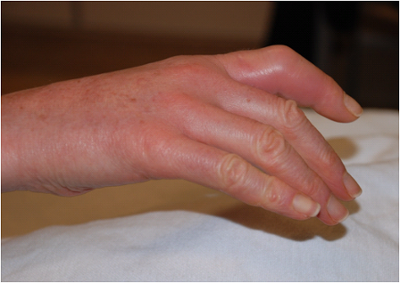Hand Case 13 Background
Flexor tenosynovitis an infection of the flexor tendon sheath, typically resulting from trauma leading to direct inoculation. Trauma may be minor (such as a puncture) and remote (days or weeks). It may present as a fulminant infection, or in immunocompromised patients may present with a more indolent course. If left untreated, this infection can lead to sepsis, tendon necrosis, adhesions, and eventually loss of function.
The most common bacterial pathogens are skin flora including gram-positive cocci like Staphylococcus aureus and Streptococci species. Consider MRSA coverage, gram-negative rods, and anaerobic inoculation depending on mechanism of injury and patient’s medical history.
The risk of proximal spread of the infection varies depending on which finger is involved:
• The flexor tendon sheaths of the 2nd-4th digits normally have independent synovial sheaths. As a result, infection in these digits is more likely to be contained within the respective sheaths. However, if the infection continues untreated, these sheaths can rupture proximally and allow spread to the mid-palmar space and subsequently up the forearm.
• Infection of the flexor surface of the 5th finger or thumb is more likely to spread to the palm as both sheaths communicate with the common flexor sheath. Additionally secondary to this anatomy, these fingers are less likely to display dramatic swelling compared to the 2nd-4th fingers as they have a larger area in which to drain and spread
